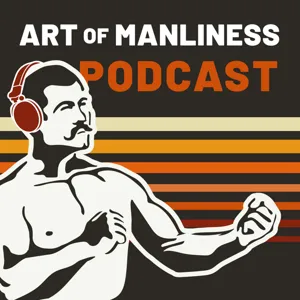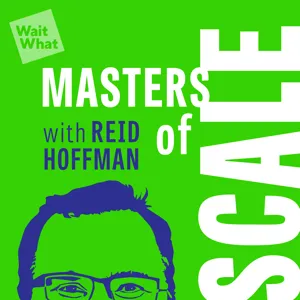Podcast Summary
Photographing Unpredictable Egyptian Fruit Bats: National Geographic photographer Mark Thiesen's creativity, problem-solving skills, and patience paid off as he captured a unique image of an Egyptian fruit bat using innovative techniques and adapting to unpredictable subjects.
National Geographic staff photographer Mark Thiesen's job requires creativity, problem-solving skills, and patience. Mark showcased these qualities when he captured a unique photograph of an Egyptian fruit bat. The setup included a camera on the ground, a strobe, and a LIDAR trigger. However, getting the perfect shot was not easy, as the bats were unpredictable and would often fly in the wrong position or miss the frame entirely. Despite the challenges, Mark persisted and eventually succeeded, even managing to capture a spontaneous image of a bat sitting on his computer. Mark's ability to adapt and innovate is a crucial aspect of his role at National Geographic, where he tackles various photography projects, including the invention of solutions for complex shoots. Additionally, Mark's hobby of keeping beehives on the Nat Geo headquarters rooftop highlights his resourcefulness and passion for exploration.
Adapting to different photography styles and fields: Versatility and adaptability are crucial for success in photography and other fields. Embrace new experiences and develop a range of skills to thrive in various areas.
Versatility and adaptability are valuable assets, whether in photography or other fields. Mark and Becky Hale, National Geographic's staff photographers, are required to be multitaskers, able to excel in various photography styles. Mark compares himself to a Swiss army knife, capable of handling a range of tasks. Similarly, when producing a podcast like Pop Culture Moms, Andi Mitchell and Sabrina Colberg bring their diverse interests and experiences to the table. In photography, Mark's ability to adapt and excel in different areas has led him to become certified as a wildland firefighter. His background in Southern California and early experiences with a police scanner sparked his interest in this field. By being open to new experiences and developing a range of skills, Mark has been able to succeed in various areas of photography and beyond.
Earning a Red Card for Wildland Fire Reporting: A Red Card is a crucial certification for journalists covering wildland fires, enabling access to fire scenes, building relationships with firefighters, and ensuring safety. Obtaining a Red Card requires fire training and approval from fire managers.
The red card, a basic firefighting certification for wildland firefighting, plays a crucial role in gaining media access to fires in many parts of the country. This certification not only helps in building relationships with wildland firefighters but also ensures safety for the media personnel. Obtaining a red card involves undergoing fire training and gaining the approval of fire managers. The red card is not just a permit; it's a valuable tool for journalists to capture authentic images and stories from the heart of the fire scene. The speaker's personal experience, from witnessing a train accident to earning a red card and covering fires as a journalist, highlights the significance of determination, passion, and the right connections in pursuing a unique and impactful career.
Building trust with firefighters and understanding fire's complexities: Photographers must build trust with firefighters, learn about fire's intricacies, and become an asset rather than a liability to capture meaningful images and contribute to the firefighting effort. Fires can smolder underground and resurface, emphasizing the importance of firefighters' role in managing them.
Photographing a fire requires building trust with the firefighting crew and understanding the complexities of their work. This involves being aware of the counterintuitive aspects of fire behavior and not being a burden to the team. Firefighters view fire as a living being, and learning about its intricacies helps establish rapport and respect. By becoming an asset rather than a liability, photographers can capture meaningful images while contributing to the firefighting effort. Additionally, fires can smolder underground during the winter and resurface during hot, dry conditions, a phenomenon known as holdover. This underscores the importance of being attuned to the ever-changing nature of fire and the vital role of firefighters in managing it.
A creative hub for diverse photography projects: The National Geographic photo studio is a bustling hub of creativity where various types of photography are produced, from magazine covers to marketing images and experimental projects, using innovative techniques and equipment.
The National Geographic photo studio is a bustling hub of creativity where various types of photography are produced, from magazine cover shots to marketing images and even experimental projects like making it rain indoors. The studio has been a part of the speaker's life for 32 years, and they have captured a diverse range of subjects, from staff pets to explorers studying rain reclamation. The studio is always buzzing with activity, and the team is always looking for innovative ways to bring their subjects to life, like creating the illusion of rain indoors for a portrait session. The studio is filled with equipment, from high-speed strobes to sprinklers and kiddie pools, and the team is always ready to tackle new challenges.
Planning and executing a visually engaging photo shoot: Effective communication, careful planning, and precision are crucial for a successful photo shoot, ensuring a visually engaging final product in a short timeframe.
Creating a visually engaging photo involves careful planning, communication, and execution. The team discussed the logistics of shooting a water drop photo, testing the setup with the model, and adjusting various elements such as shutter speed, lighting, and background. They also communicated with the model, Enrique, about the process and ensured he was comfortable. The shoot itself involved capturing multiple expressions and angles within a short timeframe, and the team repeated the process until they were satisfied with the results. The entire process took less than half an hour for the subject, ensuring they remained engaged and focused. Despite having hot water available, the team finished just as the water was warming up, demonstrating the efficiency and precision required for a successful photo shoot.
Beekeeping at National Geographic: A Hobby Turned Productive Venture: Beekeeper at National Geographic manages six hives, producing £540 worth of honey annually. Honeybees create honey by putting nectar in frames and evaporating it, which is then extracted using centrifugal force.
Mark Thiessen, a beekeeper at National Geographic, manages six hives on the rooftop of their headquarters. He took up beekeeping as a hobby with the intention of gaining experience before retiring and moving out west. The honey is extracted using a machine called a honey extractor, and last year, the bees produced £540 worth of honey. Thiessen was fascinated by the honeybee colony's resemblance to a superorganism, where all cells have the same DNA but have differentiated functions. The honeybees create honey by putting nectar in frames and evaporating it to 17% moisture before capping it. The honey is then extracted using centrifugal force, which flings the honey out of the honeycomb cells against the walls of the extractor and into 5-gallon buckets. This process results in a significant amount of honey, showcasing the productivity and importance of these insects.
The interconnectedness of cells and organisms: Every role, no matter how small, contributes to the larger whole of life's complexity and interdependence.
Just like in a bee colony where every bee has a role to play in the survival and growth of the colony, each cell in our body works together to enable us to function optimally and pursue our unique roles in life. Reproduction in a bee colony is not about creating a new bee, but rather about creating a new colony. Similarly, in humans, reproduction is about creating a new human being. This intricate interconnectedness of cells and organisms is a fascinating reminder of the complexity and interdependence of life. It's a reminder that every role, no matter how small or insignificant it may seem, contributes to the larger whole. So, whether you're a photographer, a beekeeper, a smokejumper, or a honeybee, embrace your role and the impact it has on the larger system.






